0 - Principles and Practices
Final Project Proposals
E-Kulele
After a long time thinking about what my final project should be, I decidied to go for one of my hobbies, the music. I am a guitar player and ukulele player, so it would be awsome if I create my own instrument but adding some electronics and new features.
So, I decided to go for an Ukulele, because it is my favourite instrument and is smaller than a guitar so I can try more thing with it without wasting a lot of material. The idea is that all the thing done in the project could be scaled up to a guitar.
When I thought about the idea of making a ukulele I had many ideas of things that could be done with it, so I decided for a few to limit the project. These are the main new ideas I would like to add to a traditional Ukulele:
Foldable Ukulele
I love to travel with my ukulele, so making a folding one would be a fantastic idea. The first thing I imagined when I came up with the idea was to make it retractable. The idea is that the neck can enter into the body and, to maintain the tension of the strings, that the strings themselves are rolled into a roller inside the same body.

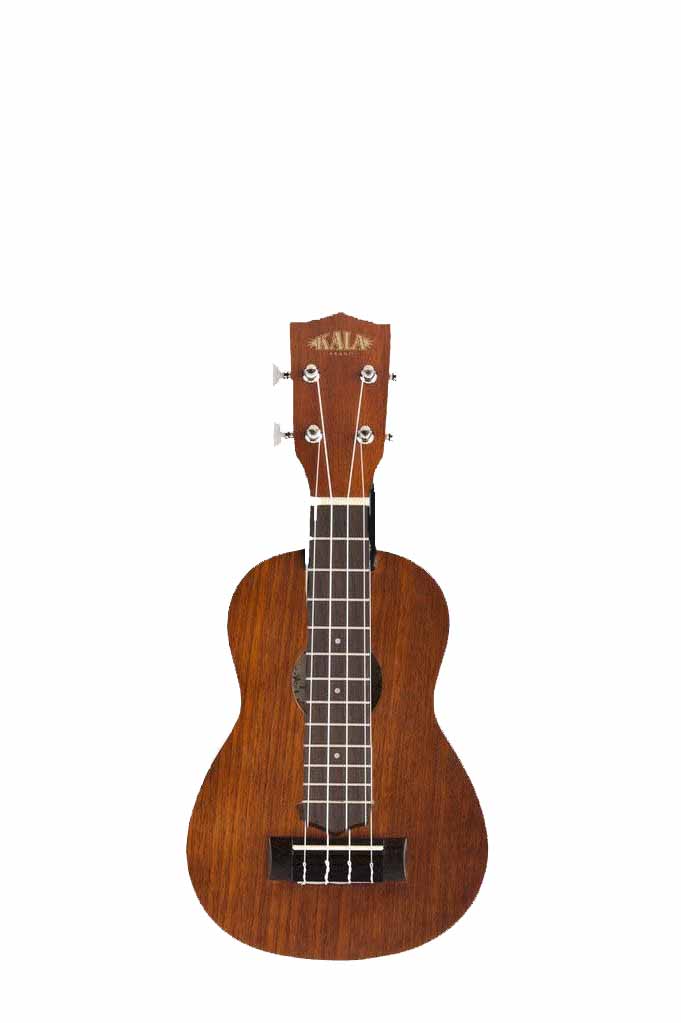
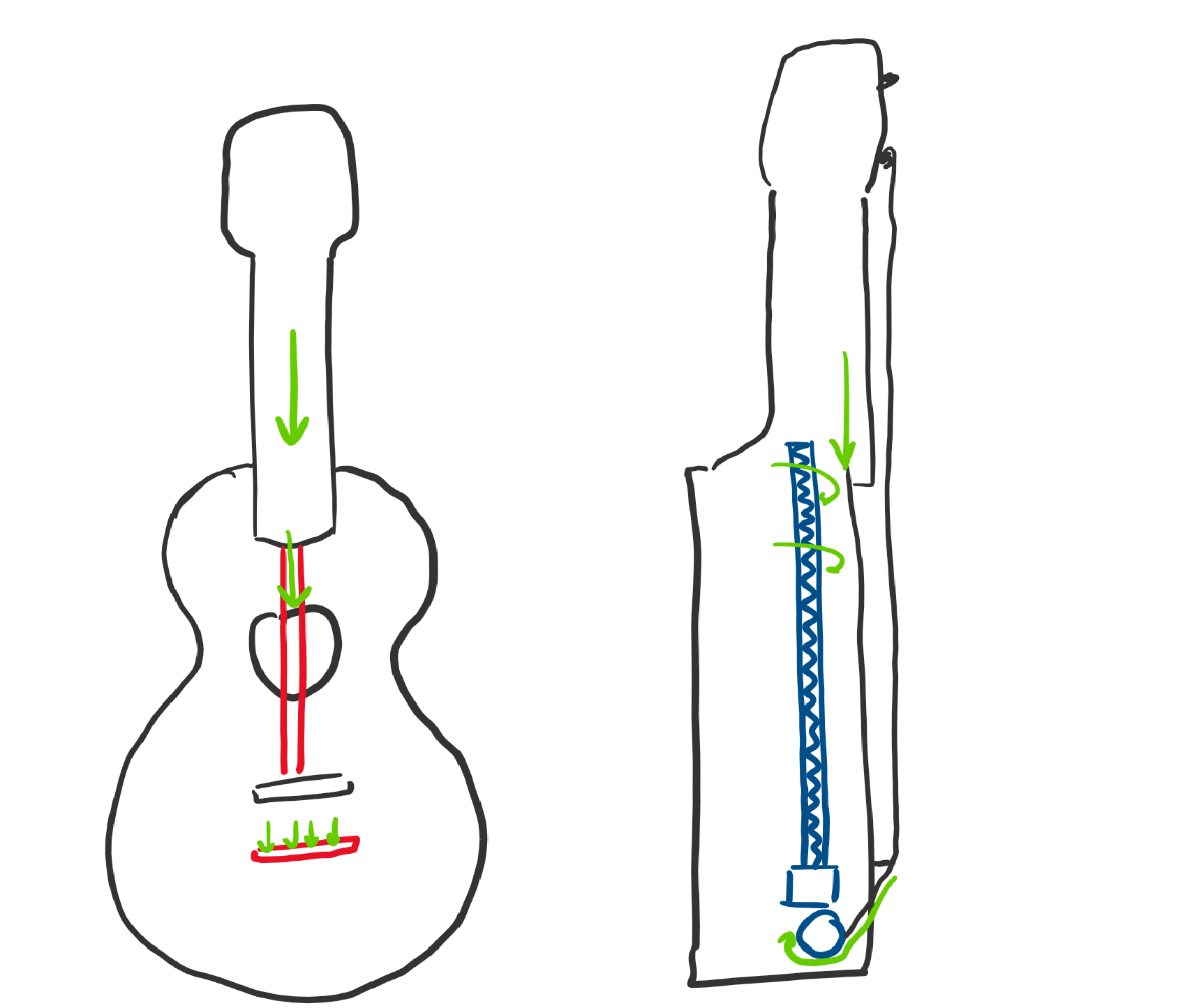
To do so I would like to try to use a motor like a Nema17 and a metal axis like a 3D printer to fold it, but I will need to test the force of the motor. I also would like to try to use the same motor for the neck movement and for the strings, like this we will ensure that the movent between them is lineal.
What has been done before?
The size of the musical instruments has been allways a problem, so there are a lot of prototypes and examples of foldable guitars. Here are some examples:
The first example is a foldable guitar with a specific hinge between the neck and the body that allows the user to fold it and put it in a smaller back. It is designed for travellers, to carry it on with you in the plane and anywhere. This design was made by Voyage Air Guitar.
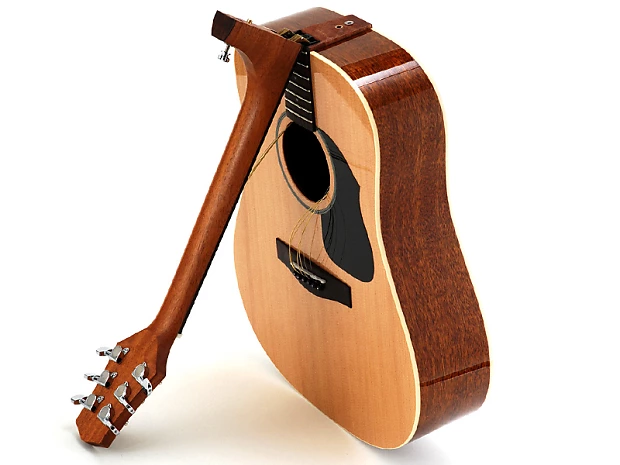
Another great example is the model designed by the catalans firm Pons Guitars. It is a modular electric guitar, where the body can be desatached from the neck to change the stetic of the guitar, allowing the player to have multiple guitars in a single instrument.

Auto-Tune
Another idea that was on my head is to use some motors to auto tune itself. This can be achived easily using a tunner and controlling the motors. To do it I will need to learn how a tunner works and try to do it modular to us with other instruments as it is a very interesting tool.
The first idea is to use a piezo sensor to read the vibration of the strings to detect the frequency. With it, we can tune each string as it has it's own frequency. This type of tunners are widely recognized and easy to get from any music shop.
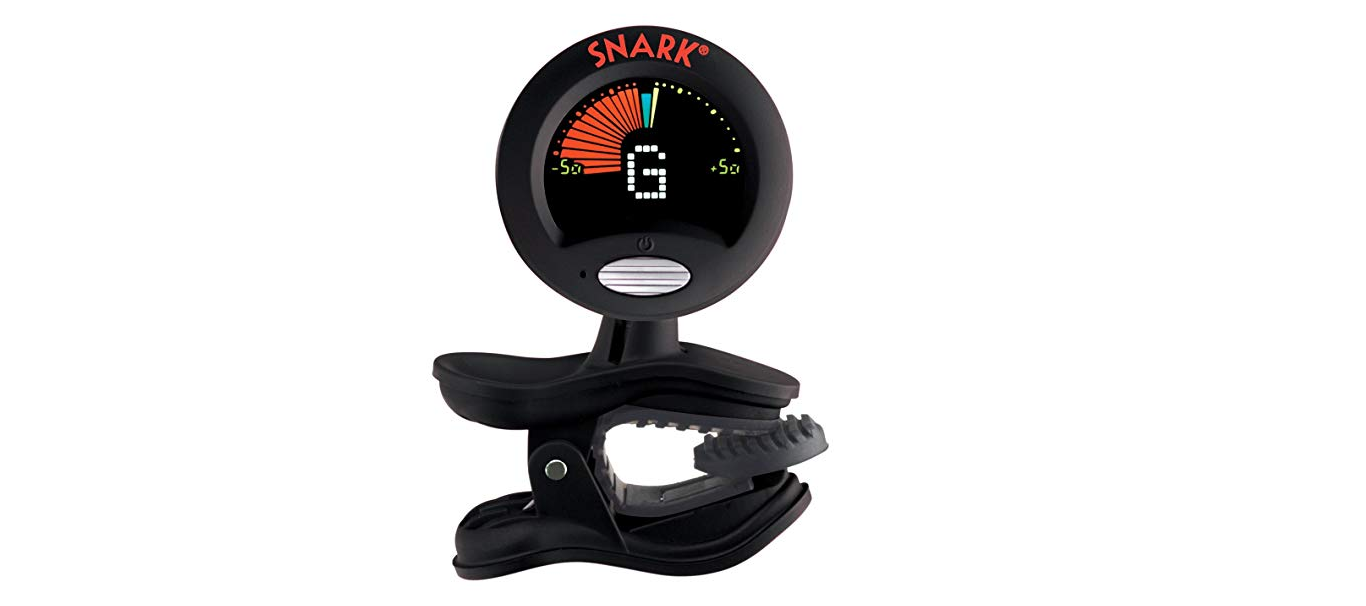
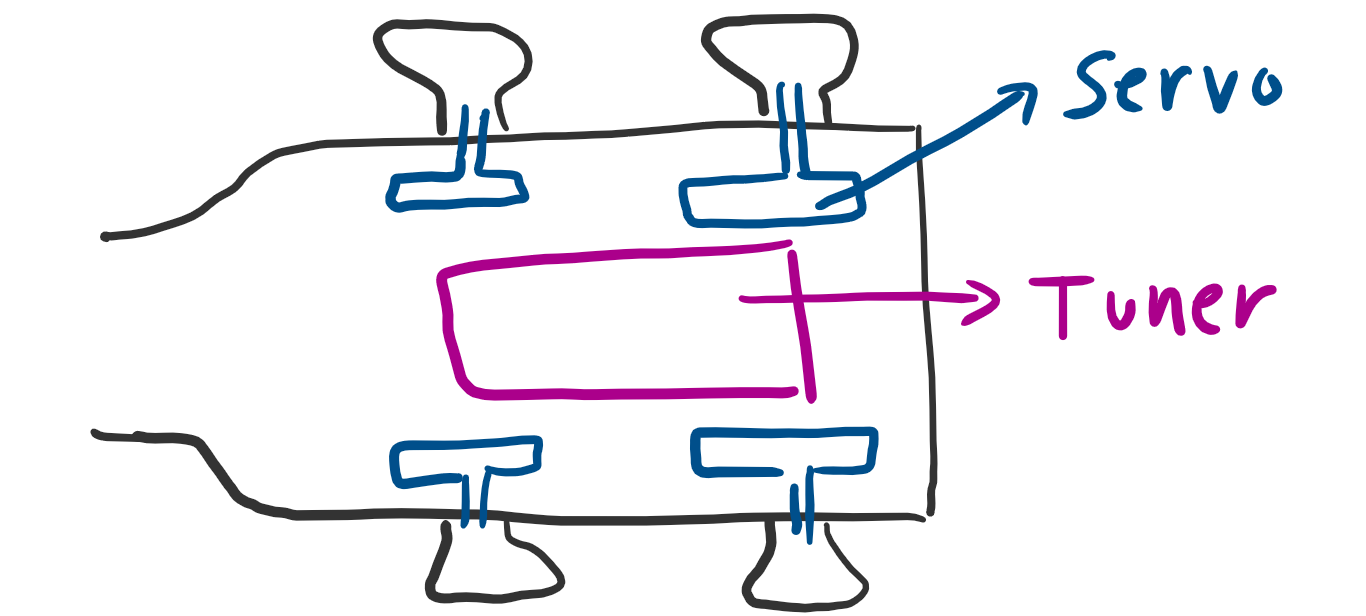
What has been done before?
There are some examples of companies and individuals that created some devices for automatic tunning of the guitar. The most clear example is the one created by Gibson with an automatic tunner. This invention didn't had much succes, but I find it a really interesting feature to insert to any instrument.

LED Neck to lear how to play
Learning to play an instrument is never easy, but I would love to help people do it. So the main idea is to program some LED's in the neck to show which strings have to be played, with a dataset of the chords and some begginers songs.

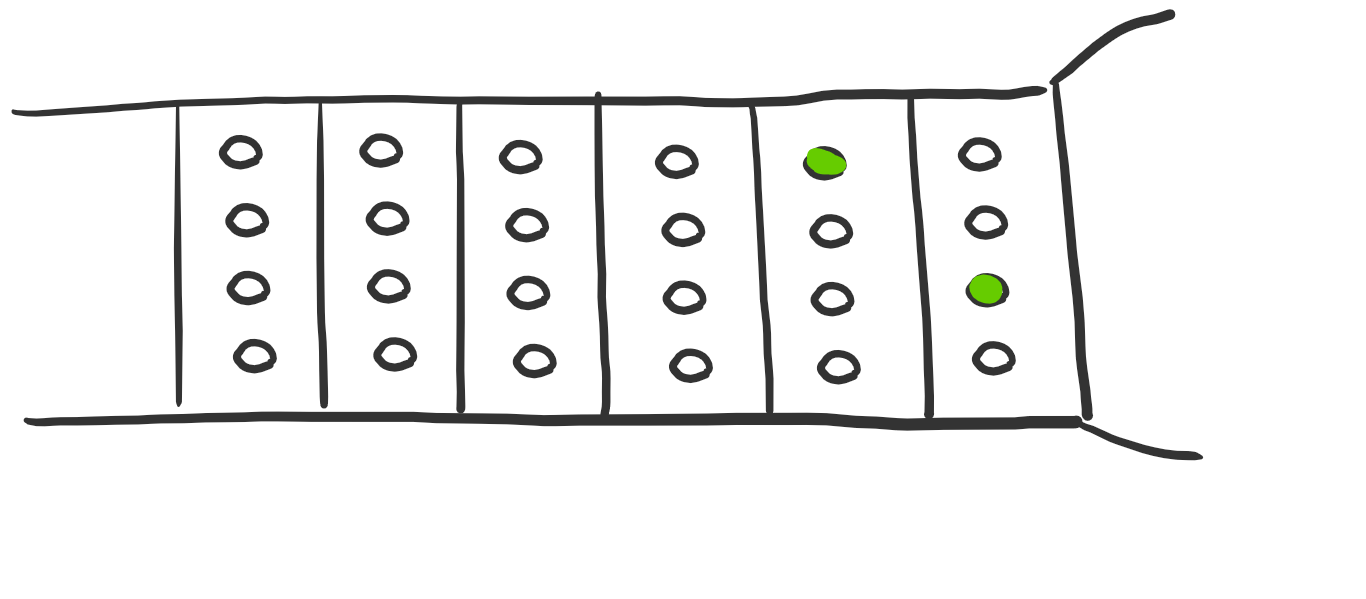
What has been done before?
A great example is the Populele made by Xiaomi, a Ukulele equiped with bluetooth and electronics to light up the neck to show where to play. I find it a really cool idea and really usefull for beginners.
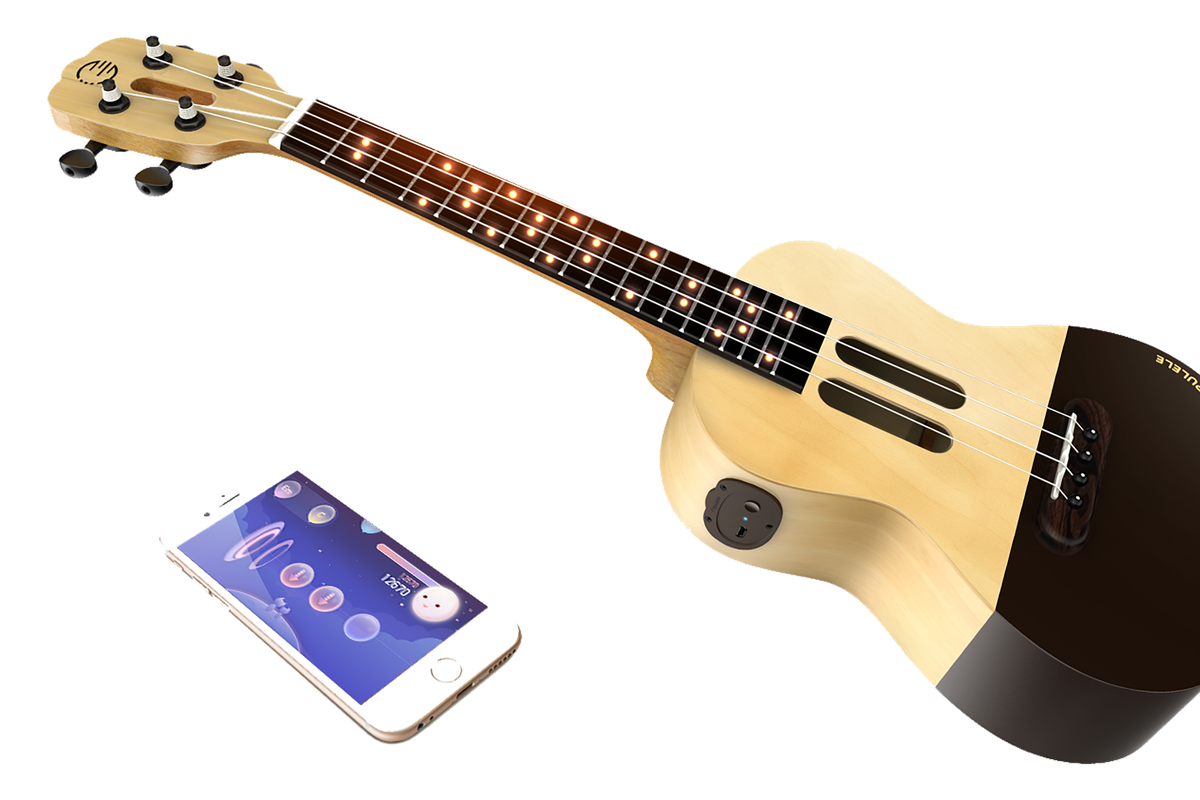
Interface
Finally, I would like to create an interface to control all the features. It is important to know that the ukulele can be tunned in different ways, so it would be nice to control the tunning motros with an app or interface. Also to choose the chords or song you want to play for neck ilumination.